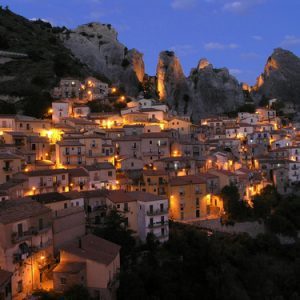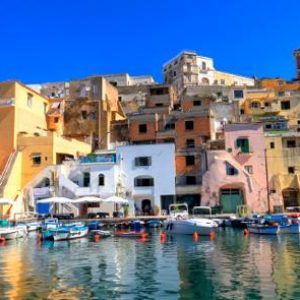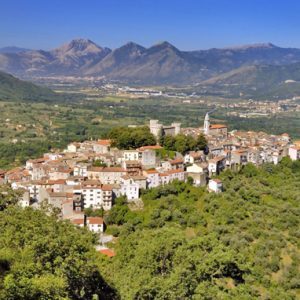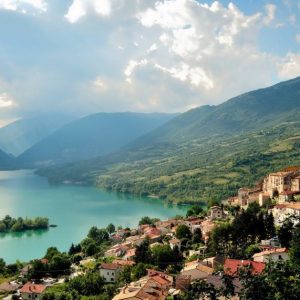THE SAMNITES REGIONS
Long before Roma was built, the Samnites, a population that migrated and blended with the descendants of the Italic Oschi or Opici, settled in the territory corresponding to the regions of Abruzzo, Molise, most of Basilicata and part of Campania.
Although the Roman historians report a treaty with the Samnites in the year 354 BC, it is presumed that the Samnites dominated the territory since the VII or VI century BC.
The principal economic activities of the Samnites were sheep farming, agriculture and trade. Wheat, olive oil, sheep, cattle, milk by-products, woolen material and clothes manufactured by their women were traded in markets established at stop and rest points of the “tratturi”. The “tratturi” are grassy paths that the shepherds used to move heard of goats, sheep or cattle from the highland to the planes. The “tratturi” are still visible today and were used until a few centuries ago; these ancient routes influenced the economy and history of the Samnites.
The region was organized in a confederation united in the defense against enemies. The Samnites considered military preparation of basic importance and young men trained in war games and often sent to fight as mercenaries.
They introduced new strategies to the art of war and developed the square shield. They fought the Romans in three wars, they won the second war, but lost the last war in 290BC and the Samnites retreated in the mountains but never completely surrender their fighting spirit, not even when in the year 82BC Lucius Cornelius Sulla destroyed all the cities and villages in Samnium and killed or dispersed the population.
The Romans used the Samnites as gladiators; many were used by the Romans for their training as public officials. Pontius Pilates, Roman governor of Judea, was probably a Samnite.
The proud people living in this area put up a struggle against the Greeks, the Romans, the Papal State and any other domination and the only way to control them was to isolate them in their beautiful valleys and mountains unspoiled even at present.

BASILICATA OR LUCANIA
Basilicata or Lucania This mountainous territory is surrounded on the north by the Campania region, on the west by Apulia and Calabria on the south. It was inhabited by the indigenous population called Lucani who had assimilated with the people of Anatolian origin, the Liky, who emigrated in the region between 1300 and 1000 BC

Cilento and the Mediterranean Diet
The Cilento South of Salerno, a large area known as the Cilento National Park, the second largest in Italy, is the preferred destination for nature lover, hikers, and Italian vacationers. This Cilento is not known to the international tourist, even though was selected as UNESCO World Cultural Heritage of Mankind. The coast …

CAMPANIA
Campania The region of Campania is comprised of five provinces: Naples, the region’s capital, Salerno , Caserta, Avellino and Benevento. Campania can be divided into two main sections for the nature of the terrain, for the people’s temperament, trait, and for their cultural background. Before the Greeks and the Romans, the Osci or Etruscans occupied …

MOLISE
Molise This small and beautiful region is outside the tourist paths. Campobasso is the capital of Molise. It once produced swords and blades and now the industry has changed and it now produces knives and scissors. The town of Termoli, the largest seaside resort in Molise, provides for the mostly Italian vacationers, a favorite summer destination with its …

ABRUZZO
Surrounded on the north by the Marche, west by Lazio and south by Molise, the region of Abruzzo spreads out from the Apennines Mountains to the Adriatic Sea. The landscape is austere with a primitive beauty, untamed mountains and oasis of unspoiled territories where the National Parks of Abruzzo, of Sirente-Velino, …
- Sicilian Appetizers
- Sicilian Delicacies
- Baked Delicacies
- Sicilian Pasta Recipes
- Traditional Sicilian Pasta
- Meatless Pasta Recipes
- Legumes and Vegetables Pastas
- Rice Recipes
- Sauces and Condiments
- Meat Recipes
- Seafood Recipes
- Egg Recipes
- Sicilian Salads
- Vegetable Recipes
- Sicilian Desserts
- Wines and Rosolio
- Festino – St. Rosalie's Feast
- Christmas – Natale
- Easter – Pasqua
- Saint Joseph Table
- Recipes of the Italian Regions
- About the Italian Regions
